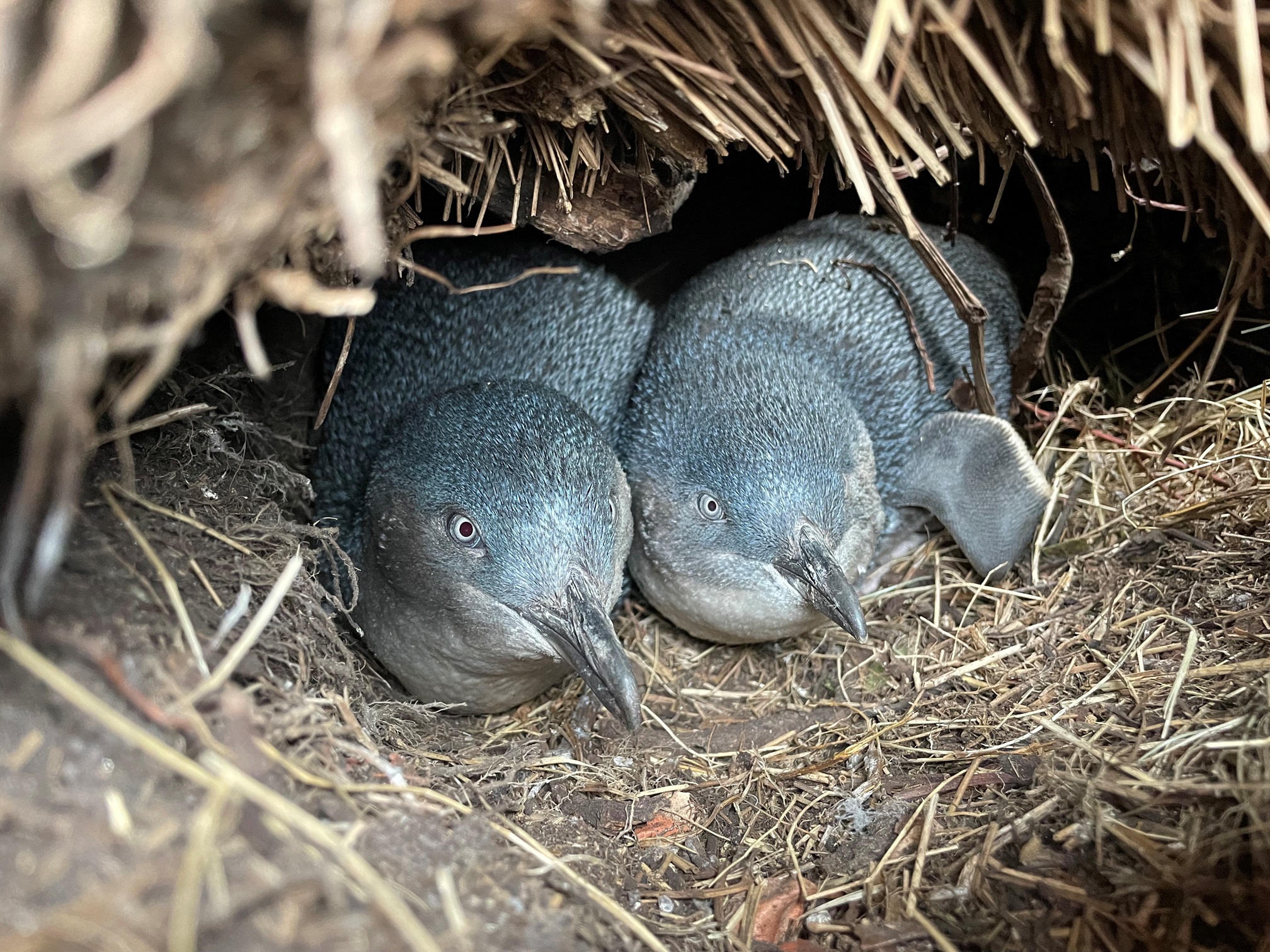
Scientists have detected PFAS in the nesting soils and blood of Little penguins (Eudyptula minor) that forage and breed along lutruwita/Tasmania’s coastlines, and it’s alarming evidence that ‘forever chemicals’ have become widespread in marine and coastal environments.
Per- and polyfluoroalkyl substances (PFAS) are a large group of chemicals that resist heat, stains, grease and water. This makes them ideal for use in countless applications – from fire-fighting foams, medical devices and metal plating to fabric and furniture waterproofing, non-stick cookware, cosmetics and sunscreen, fast food packaging and more. But there’s a dark side.
 “They’re referred to as ‘forever chemicals’ because they’re very stable in the environment, they can transport long distances through natural processes and are resistant to degradation,” said study lead author, Mel Wells, who is a PhD candidate at the University of Tasmania’s School of Natural Sciences and Institute for Marine and Antarctic Studies (IMAS).
“They’re referred to as ‘forever chemicals’ because they’re very stable in the environment, they can transport long distances through natural processes and are resistant to degradation,” said study lead author, Mel Wells, who is a PhD candidate at the University of Tasmania’s School of Natural Sciences and Institute for Marine and Antarctic Studies (IMAS).
"Bioavailable PFAS enter food chains and become concentrated within predators – called bioaccumulation.”
Recently published in Science of the Total Environment, the PhD study detected 14 different PFAS homologous in nesting soils, blood and abandoned eggs of Little penguins. Perfluorooctanesulfonic acid (PFOS) was the most prevalent PFAS, detected in 76% of the 50 soil samples collected from Little penguin nests, and in just over 82% of the 45 blood samples.
“We found that PFAS concentrations were positively associated with increased urbanisation around penguin colonies. We detected PFAS in 100% of the samples collected from Burnie and Hobart’s Derwent Estuary,” Mel said.
 “We then explored the association of PFAS concentrations to several Little penguin health parameters, and found an effect on circulating total plasma proteins, haematocrit (packed cell volume) and genotoxicity. These results indicate a detectable reduction to general health as a result of PFAS exposure and possible evidence for diseases, but more research is needed to verify this.”
“We then explored the association of PFAS concentrations to several Little penguin health parameters, and found an effect on circulating total plasma proteins, haematocrit (packed cell volume) and genotoxicity. These results indicate a detectable reduction to general health as a result of PFAS exposure and possible evidence for diseases, but more research is needed to verify this.”
Our oceans absorb and hold PFAS and many other pollutants that resist degradation. These enter surface waters and sediments through run off and natural atmospheric processes, then accumulate over time in the food chain.
“This is a real health risk to biological life, especially to marine predators like seabirds, seals and dolphins,” Mel said. “And because we consume seafood exposed to PFAS, it’s also a risk to human health.”
The study confirmed that further research is needed to understand the pathways of exposure and possible point sources of PFAS pollution around the state, and to explore ways to eliminate PFAS from the environment.
“Our study showed that even in low concentrations, PFAS may have a detectable relationship with penguin health – and understanding the sublethal consequences from this exposure is vital,” Mel said.
“As coastal urbanisation increases, and human populations continue to encroach on wildlife habitats, ecotoxicology studies are increasingly important to understand the impact we’re having on vulnerable wildlife populations and to inform management decisions.
“The persistent nature of these pollutants makes it critical that we focus our efforts on eliminating them from our environment.”
The study was carried out in collaboration with ADE Consulting Group and the National Measurement Institute. It was supported with funding from the Australian Academy of Science, the Ecological Society of Australia, the Wildlife Disease Association of Australasia and the Australasian Seabird Group.

Images from top:
Published 17 January 2024